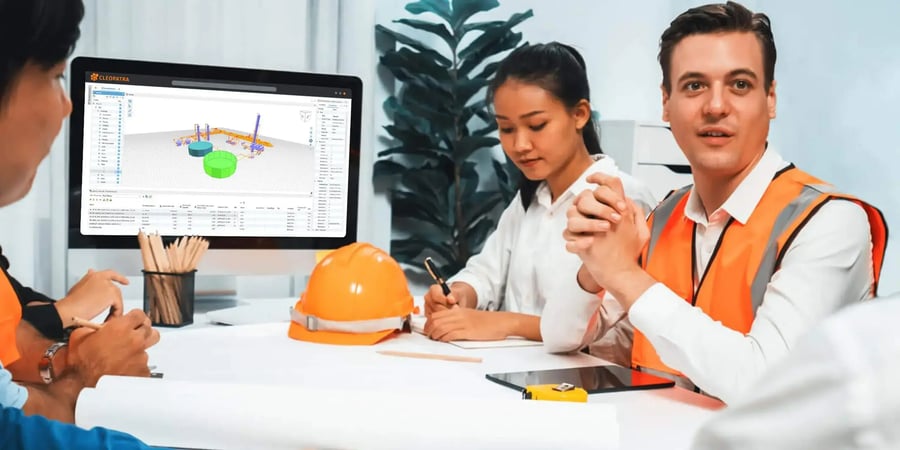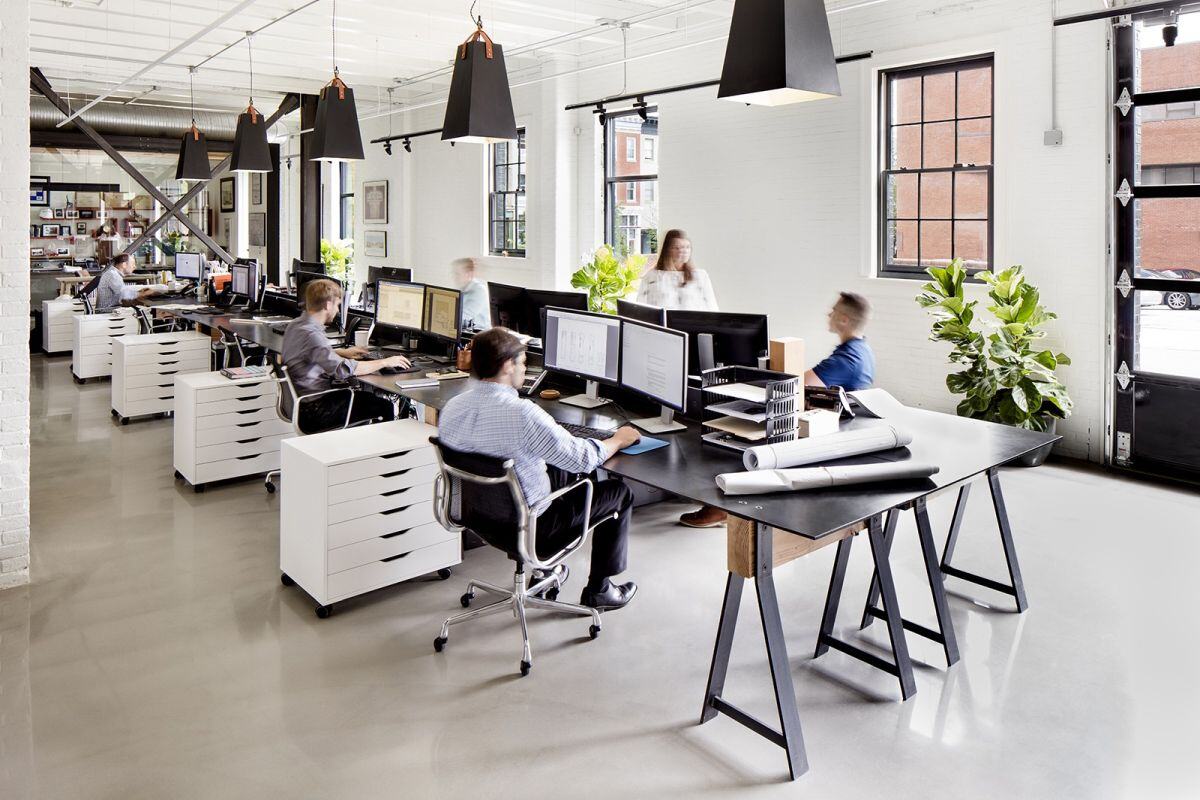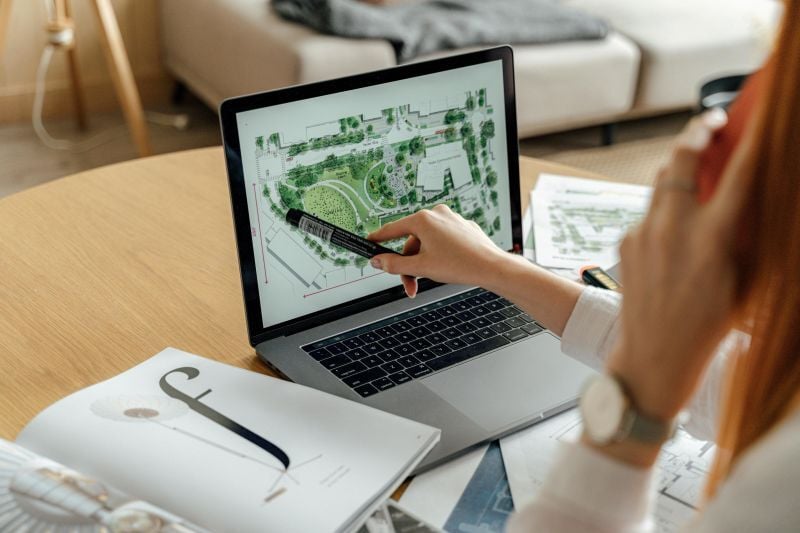Top 10 BIM Interview Questions for Civil Engineers and How To Ace Them (2025)

Table of Contents
Building Information Modelling (BIM) is a new-age and upcoming method used for designing and constructing buildings. BIM has brought a major change in the way projects are conceptualised, designed, and executed. This has led to a high demand for BIM professionals in the AEC (Architecture, Engineering, and Construction) Industry.
If you are a BIM professional and want to be hired by a reputed organisation, but find it difficult to crack interviews, you are at the right place. In this ultimate interview preparation guide, we’ve compiled a list of the most asked BIM questions and sample answers. We have also enlisted tips to improve your performance in interviews and how to efficiently present your practical experience. This ultimate guide will help you in your job search by familiarising you with BIM interview questions beforehand, ensuring you can confidently showcase your BIM skills and practical experience.
Things To Keep in Mind While Going to an BIM Interview

The journey of a job interview is a pivotal moment that shapes your career trajectory. Whether you are a fresher or a seasoned professional, the interview process is a crucial step to new opportunities. However, it’s not about just rehearsing your resume. But about representing yourself authentically while demonstrating your skills to your potential employer.
The competition is more fierce than ever and you must equip yourself with the right mindset and effective job search strategies to stand out from the crowd. Read further to learn the things to keep in mind while going for an interview.
1. Update Your CV and Portfolio
Keep your CV and portfolio up-to-date with your latest projects and ensure that you can explain your portfolio confidently. While many interviewees bring digital copies of their work, it’s advisable to have a hard copy of your portfolio to prevent potential technical issues.
2. Do Your Homework
Familiarise yourself with the company’s background and do in-depth research on the projects they do to prepare yourself for organisation-related questions. You can also engage in conversations with current employees to gain insights into the company’s work culture.
3. Be Honest and Keep Your Interaction Conversational
Maintaining a smooth conversation with the interviewer ensures that there are no awkward pauses and makes the interviewer more interested in you. Being completely honest about your experiences and qualifications and giving in-depth answers helps the interviewer understand your value system and work ethic.
4. Answer Briefly and to the Point
Keep your answers concise and to the point. The interviewer isn’t interested in unnecessary details and may get bored by your approach. Ensure you capture the interviewer’s attention and use it to your benefit.
5. Don’t Pretend to Know About Something That You Don’t
The person interviewing you is most likely a field expert, so there is no way that you can bluff your way around them. If you don’t know about a particular BIM tool or plug-in, just be honest and say that you have no idea about it and you will try to find more information about the same.
Also Read: 8 BIM-related Technical and Soft Skills You Need for an Excellent BIM Career
10 Most Asked BIM Interview Questions in 2025
It's best to prepare for specific standard questions to be able to ace your BIM interview questions. This will instil confidence in you and increase your chances of getting hired. Below is a list of 10 commonly asked BIM interview questions in the civil engineering industry and sample answers that will help you prepare better for your interview.
Q1. Could you tell me a little more about yourself?
This is the most common opening question for any interview. Although it may seem like a simple question, this is your opportunity to grab your interviewer’s attention. Keep your answer concise, ideally at most thirty seconds. Instead of just talking about your academic experiences, you could also talk about workshops and events that you attended and interests that you have (again, without going overboard). Preparing for this question beforehand gives you a better chance of creating a lasting impression on your interviewer.
How to Prepare Your Answer?
- Recall your academic and personal experiences and mention how they have shaped you as an individual.
- Highlight your interests and expertise.
- Relate your technical and soft skills to the company’s needs and create a narrative that aligns with the goal of the company.
Sample Answer:
“I am XYZ, and after my graduation, I worked for two architectural firms where I realised two things. First, landing a high-paying job in the architecture industry is difficult, and second, there is a major gap in technical expertise, which slows down the way people function. I was fascinated by BIM and decided to pursue my interest. I eventually enrolled in a BIM professional course and upskilled myself. I have hands-on experience with software like Rhino, Grasshopper, and Revit. I have done personal projects and internships related to BIM to gain relevant experience. I have also worked on my soft skills and can effectively communicate, collaborate, and manage with particular emphasis on time management..“
Q2. How have you developed your skills as a BIM modeller?
BIM is a new and complex program that requires skills. So, the interviewer would want to know whether your skills align with the company’s needs. If you have acquired any advanced modelling techniques, use this interview question for a BIM Modeller as an opportunity to demonstrate your familiarity with the features and explain how it has helped you excel in your career in the construction industry.
How to Prepare Your Answer?
- Begin by listing the BIM software programs that you’ve learned.
- Talk about a project where you’ve implemented your BIM knowledge and explain how BIM software helped you solve challenges that you faced in the process.
Sample Answer:
“I have done a BIM Professional Course from Novatr which helped me develop a range of BIM implementation skills. Firstly, I am well-versed in several BIM software, including Revit, ArchiCAD, Navisworks, Dynamo, and SketchUp Pro. I understand the potential of BIM tools and have experience in creating models for various residential and commercial projects. In a recent project, I collaborated with a design team to create an intricate Revit project for improved visualisation. Additionally, I ran simulations to assess the energy efficiency of the structure, adding a comprehensive layer of analysis. Secondly, I have problem-solving skills and an eye for detail, which allows me to identify errors and areas of improvement easily.
Q3. How do you guarantee the accuracy and regular updating of data in your BIM models?
Accuracy is a major BIM component, and interviewers would want to know whether you have the necessary skills to achieve project accuracy. This will help them understand your process and how you handle data, building trust in your ability to keep data up-to-date.
How to Prepare Your Answer?
- You can start by explaining how you use BIM software like Revit and AutoCAD to ensure that the components within the model are accurate and how you review and update the model regularly.
- Mention any particular process that you follow to ensure models are error-free, like using automated error detection.
Sample Answer:
“I use BIM software to ensure accuracy in all model components. I review the model and make necessary changes regularly, ensuring that any changes made are reflected in the model. I also use an automated system to detect errors and double-check measurements so that there are no discrepancies.”
Q4. How do you use clash detection tools to identify potential conflicts between various design elements within a BIM model?
Clash detection is a pivotal part of the design process. Your interviewer would be interested in understanding how familiar you are with the process and tools to identify and resolve potential conflicts. This interview question for a BIM modeller is an excellent opportunity for you to showcase your problem-solving skills.
How to Prepare Your Answer?
- Begin by explaining how you use tools to identify potential conflicts between design elements like columns, walls, and pipes while developing a design.
- Talk about your method to analyse clash detection tests and how you resolve issues with your team members.
- Additionally, give an example of a project where you used clash detection and how it led to the project's success.
Sample Answer:
“I use clash detection tools to detect and analyse conflicts and work with other team members to resolve the issues. I have extensive experience using this method for multiple residential and commercial projects, and I have been able to resolve clashes effectively, saving both time and effort.”
Q5. What methods do you use to improve the performance of large BIM models?
BIM models are complex to handle, so the interviewer would want to understand if you have the skills to optimise and manage the performance of models. This interview question aims to check whether you have the technical skills needed to accomplish large-scale projects.
How to Prepare Your Answer?
- Begin by discussing optimising techniques like minimising elements/resources or using components instead of individual objects and the impact on model performance.
- Mention plug-ins or tools that help you streamline the process and talk about best practices for optimisation.
Sample Answer:
“I use various methods to ensure that models are optimised, like reducing the number of elements or using components. I use multiple plug-ins and tools that can be used to streamline the process, like Revit for 3D modelling or Navisworks for clash detection and follow best practices like avoiding unnecessary geometry or maintaining components within a unified coordinate system”.
Also Read: How BIM Benefits Small Firms and Independent Consultants?
Q6. If you notice a mistake in your previous model, how would you correct it?
Mistakes are unavoidable and can happen anytime, so the interviewer needs to understand how well you respond to them. Your answer should demonstrate your willingness to identify issues, take responsibility and correct them.
How to Prepare Your Answer?
- Explain how you would assess the depth of the mistake and take necessary actions.
- Mention that you would update the team members about the mistake to make informed decisions and how you would rectify the mistake.
Sample Answer:
“Mistakes can be of various degrees. If I notice a minor mistake in my previous model that didn’t impact the project as much, I would make it a point to resolve it but wouldn’t involve the team members. However, if it were a major mistake, I would immediately update the stakeholders to ensure we are on the same page. After a collective discussion, I would rectify the error and ensure that it is reflected in the model.
Q7. Which Revit version do you prefer to use and Why?
BIM interview questions always include a mention of Revit. This question helps the interviewer test your knowledge about the various versions of Revit. It enables you to showcase your expertise in using these versions and state why you prefer a particular version over another.
How to Prepare Your Answer?
- Explain how using the latest version helps you work more efficiently on Revit projects.
- Mention the features that allow you the convenience of sharing your model.
Sample Answer:
“I use the most recent version of Revit because it offers advanced features and capabilities in BIM modelling. It includes powerful features and tools that make my work effective. It allows me to collaborate with stakeholders in real-time and receive feedback. The user-friendly interface also makes learning Revit easy.”
Q8. What Methods Do You Use To Stay Updated About the Latest Advancements in BIM Technology?
By asking this question, the interviewer wants to understand how much effort you put into engaging and being up to date about the ever-evolving BIM technology. Whether you read up on it, participate in community engagements or use any other resources to stay informed.
How to Prepare Your Answer?
- Start by mentioning events and conferences you usually attend and publications and websites you follow to stay updated with the latest advancements.
- Mention any courses you’ve taken and how actively you engage with the community by participating in discussions and attending networking events on social media platforms.
Sample Answer:
“I stay updated about the latest developments by reading various publications and websites and attending seminars and conferences. I also make it a point to actively engage with the community through discussions and networking events on social media platforms like LinkedIn.”
Q9. How would you present a BIM model to stakeholders?
The interviewer asks this question to test your ability to demonstrate how your knowledge and experience help you achieve your business goals. It helps to gauge your communication skills and confidence in handling client feedback and questions.
How to Prepare Your Answer?
- Talk about a project where you prepared a presentation for the client and mention the challenges that you faced during the process.
- Discuss the feedback that you received from the stakeholders.
- Demonstrate your ability to tackle difficult situations with professionalism.
Sample Answer:
“I recently presented a BIM model to a bunch of stakeholders for an industrial building where I had to ensure that the data was accurate and up-to-date. I made sure to research the project details and its requirements. During my interaction with them, I could answer all their questions and was able to explain the accuracy of the model along with cost savings. They were happy and satisfied with the outcomes”.
Also Read: 5 Careers and Salaries for An Architect vs A BIM Expert: A Comparative Guide
Q10. Why do you think we should consider you as a good fit for this role?
This is one of the major interview questions where the interviewer wants to know if your interests and long-term goals align with the company’s. It helps them gauge whether you’ve done enough research about the company projects and how you can contribute to its growth.
How to Prepare Your Answer?
- Thoroughly go through the company’s website, projects, and work culture. Understand their vision and show admiration for their projects.
- Mention how you can contribute to becoming an asset to the company with your interests, values, and skills.
- Talk about your non-technical skills, like researching, writing, and training and explain how these qualities make you an ideal candidate.
Sample Answer:
“I’m really looking forward to joining (XYZ Company) because of its innovative and futuristic design philosophy. I particularly admire the recent projects (mention the names). I believe my skills, interests, and values align with the company’s vision and will provide me with an environment that drives excellence. Apart from my technical skills, I’m well-versed in various non-technical skills like writing, researching, and leadership that can help contribute to the overall growth of the company and make me an ideal fit.
In Conclusion
While preparing for your BIM interview questions and answers, ensure that you have in-depth knowledge about the company and its work culture. Keep your answers conversational, and be honest about your skills and expertise. With the right approach and skillset, you can confidently negotiate a deserving salary and get offered better career opportunities.
If you want to upskill as a BIM modeller, check the BIM Professional Course for Civil Engineers, offered by Novatr today. Learning advanced technologies such as BIM will not only open opportunities but also make you a better candidate for esteemed BIM organisations.
For more insights on BIM software, AEC careers and industry trends, head to our Resources page.

 Thanks for connecting!
Thanks for connecting!
.jpg)
.png)
.png?width=790&height=173&name=BIM-C%20A%20(Course%20Banner).png)
.png)


.jpg)




